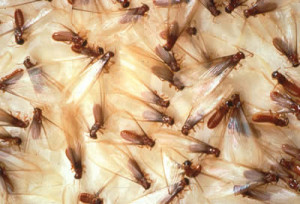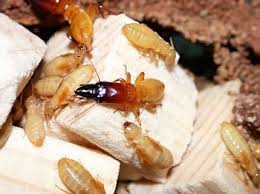How Do Termite Colonies Begin?
New subterranean termite colonies can begin in one of two ways
 1. Through a swarm – In subterranean termite colonies, the role of primaries, or winged kings and queens, is to meet, mate and start new colonies. This process is called “swarming.”
1. Through a swarm – In subterranean termite colonies, the role of primaries, or winged kings and queens, is to meet, mate and start new colonies. This process is called “swarming.”
During the course of each year, numerous small, immature termites from established colonies transform into larger nymphs with wing buds. Some time later, these individuals further transform into sexually mature males and females called swarmers or alates. Swarmers have two pairs of long narrow wings of equal size. Unlike other termites in the colony, swarmers are dark-colored, and almost black in some species.
The combination of warm temperatures and rain in the spring leads swarmers to leave the nest in large numbers by flying through mud tubes, which are specially constructed tunnels for the termites to use to exit the colony. Colonies normally swarm only once per season, but may swarm multiple times.
2. By budding of a new colony – Termites whose role is to “back-up” the primary queen in their colony by producing extra eggs are called supplementary reproductives. Their role is to help to expand the colony’s foraging territory – a process called “budding.”
 If the colony queen dies or if a part of the colony becomes isolated from the primary reproductive, supplementary reproductives may take on the role of the queen. As a colony increases in size, groups of foragers often form satellite colonies or areas of concentrated activities. Dramatic weather events like floods and soil disruption due to construction can separate termites from nest mates in the soil. When groups become physically separated from the rest of the colony and their queen, supplementary reproductives are produced in the isolated group to help establish a new colony.
If the colony queen dies or if a part of the colony becomes isolated from the primary reproductive, supplementary reproductives may take on the role of the queen. As a colony increases in size, groups of foragers often form satellite colonies or areas of concentrated activities. Dramatic weather events like floods and soil disruption due to construction can separate termites from nest mates in the soil. When groups become physically separated from the rest of the colony and their queen, supplementary reproductives are produced in the isolated group to help establish a new colony.


































































